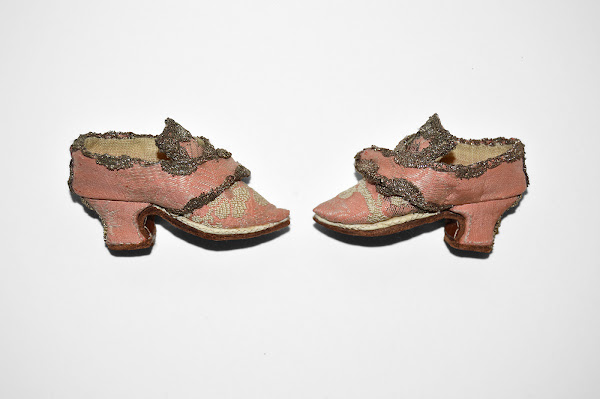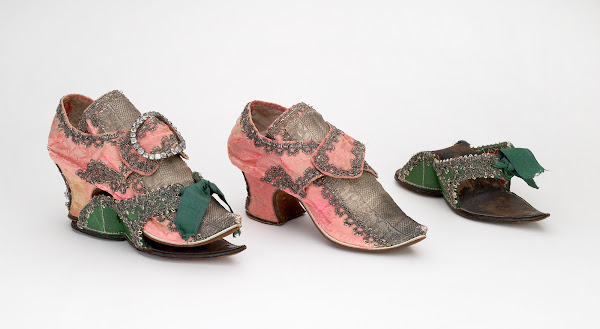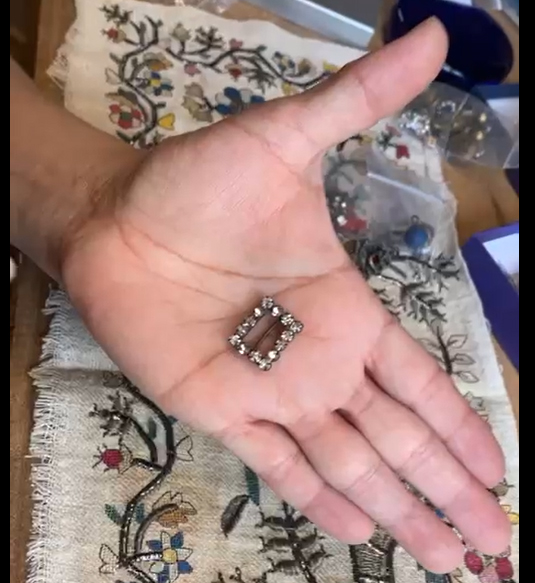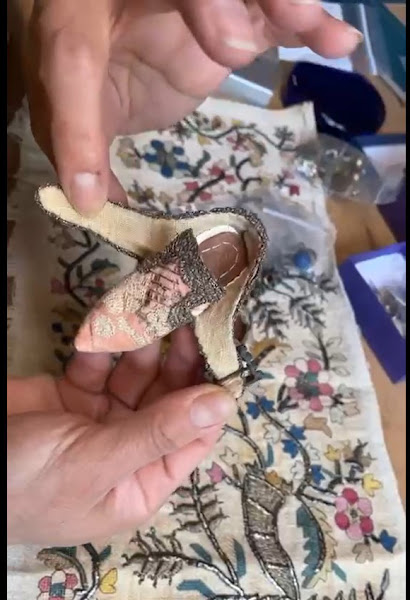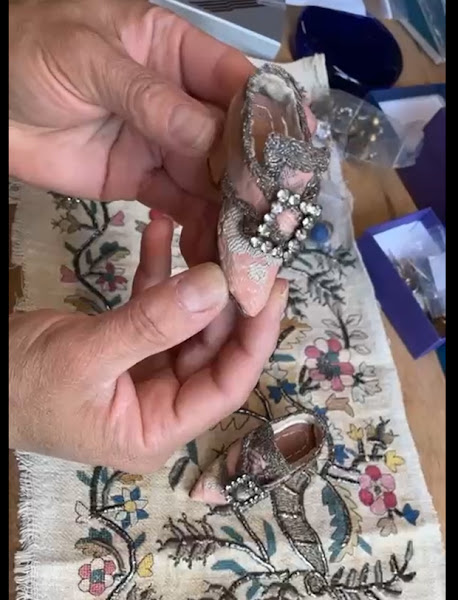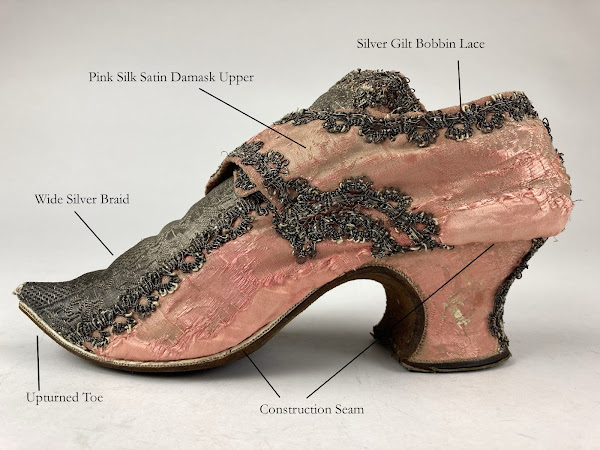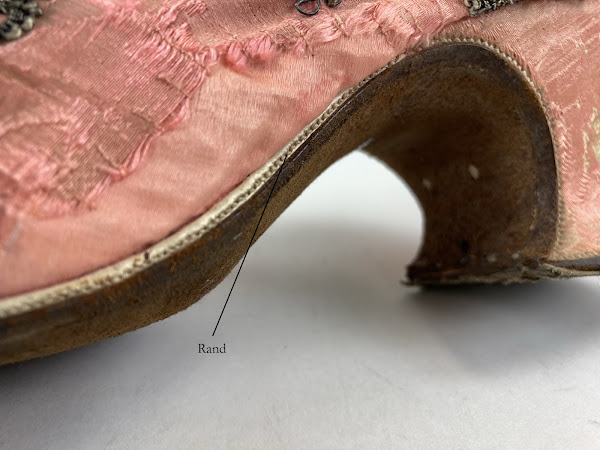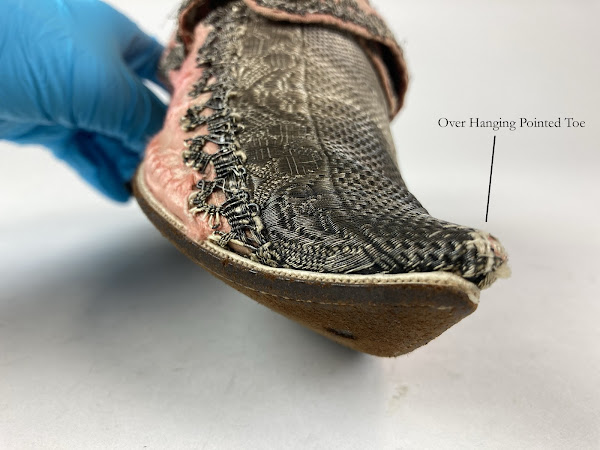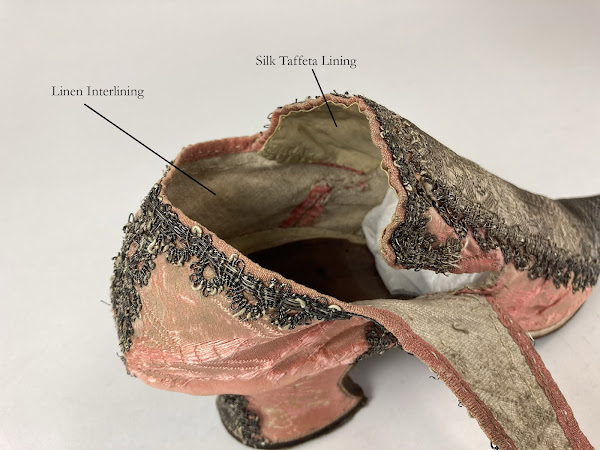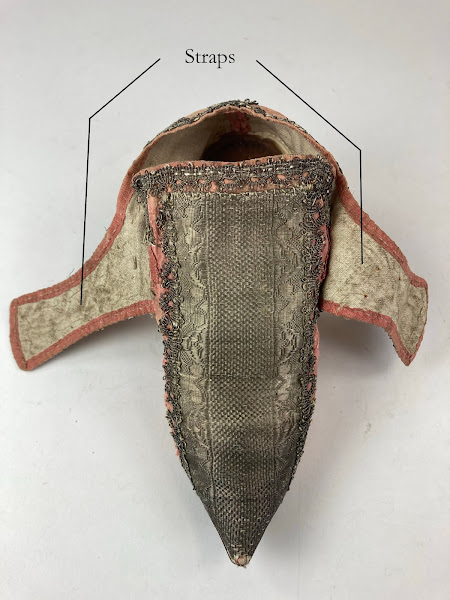This pair of miniature replica court shoes were created by Sonia Krause in 2021.
On May 19, 2021 the Bata Shoe Museum’s online Salon Series featured Sonia Krause, a doll maker specializing in 17th to 19th century dolls. The evening’s presentation Queens of Fashion: A Conversation about 18th Century Dolls with Sonia Krause was the unveiling of her latest creation.
I was lucky enough to be of assistance to Sonia back in February when she was making the doll. She was creating all of the tiny parts of the ensemble, elements like the chemise, the stays, stomacher, pockets, engageantes, and even a tiny chatelaine. For the finishing touch, the doll’s shoes were to be miniature replicas of a pair in the Bata Shoe Museum collection. Director & Senior Curator Elizabeth Semmelhack selected a pair of pink silk damask shoes dated 1735 to 1750 in the English style that the museum purchased in 1985. This delicate pair of women’s shoes would have a buckle at the closure, carefully secured using the shoe’s straps. The shoes are decorated with a wide silver braid and silver gilt bobbin lace at all of the edges and seams.
The pink silk satin damask court shoes, made and worn circa 1735 – 1750, part of the Bata Shoe Museum collection. These are the pair that inspired the miniature copies above. This pair has a matching set of clogs.
I thought it would be fun and interesting to share the photographs I took of the shoes for Sonia. There are a lot of really close up views, more even than I’m sharing here, so she could see the details on the original shoes. During the pandemic, Sonia wasn’t able to come to the museum to see the shoes in person, so I took all sorts of angles, in hopes that she would be able to get a sense of the delicacy and shape of the shoes.
You can see how tiny the shoe buckle is in miniature. This is the buckle that Sonia put on the doll-sized replica.
One of the tiny replica shoes, shown with the closure straps in an open position.
Sonia is holding one of her tiny replica creations. The tiny rhinestone buckle is holding the shoe closed, just like it will be on the doll’s foot.
When comparing the 18th century pair of shoes with the miniature replica shoes, you can see the amazing detail that Sonia was able to bring to her creations. For added interest here, I’ve added some shoe terminology. In the photos that I took, shown below, I’ve labelled the different parts of shoe, and I’ve also labelled the parts of the shoes that are unique to 18th century shoes. These are terms that most people no longer use, such as strap and rand.
The shoe in the collection is made of silk damask and has silver embellishments. The construction seam is where the upper and sole are stitched together. You can see how soft the construction of the upper is. The heel and toe areas don’t have reinforcement stiffening.
The rand is also noticeable in the picture above, but here you can see how fine the stitches are on this white leather that is inserted in the ‘construction seam’, between the upper and sole.
Profile stitching is an 18th century shoe technique. It is found around the edges of the heel.
This pointed toe shape is built-up so as to ‘hang over’ the sole. This is seen in shoes of this type from about 1685 to 1730.
With one strap open, you can see the linen interlining that gives a bit of support to the silk upper. The taffeta lining on the back of the tongue is seen as well.
A view from above showing the buckle straps in the open position. Here you can see how wide the silver braid is.
And finally, another view from above with the straps in the closed position. To be complete, a rhinestone buckle would be holding the straps together.
I hope you’ve enjoyed this close look at this 18th century pair of women’s shoes from the Bata Shoe Museum collection.
Suzanne Petersen, Collections Manager



